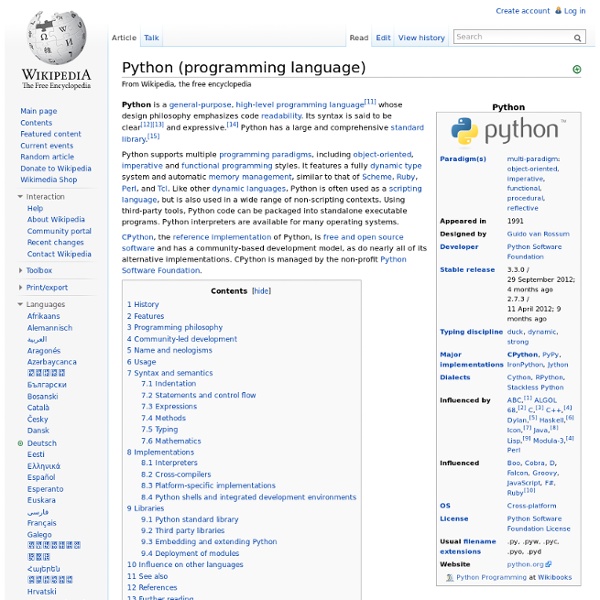



Download Python OpenPGP Public Keys Source and binary executables are signed by the release manager or binary builder using their OpenPGP key. Release files for currently supported releases are signed by the following: Release files for older releases which have now reached end-of-life may have been signed by one of the following: Anthony Baxter (key id: 0EDD C5F2 6A45 C816)Georg Brandl (key id: 0A5B 1018 3658 0288)Martin v. You can import a person's public keys from a public keyserver network server you trust by running a command like: gpg --recv-keys [key id] or, in many cases, public keys can also be found at keybase.io. gpg --verify Python-3.6.2.tgz.asc Note that you must use the name of the signature file, and you should use the one that's appropriate to the download you're verifying. (These instructions are geared to GnuPG and Unix command-line users.) macOS Installer Packages Other Useful Items Looking for 3rd party Python modules? Want to contribute? Want to contribute?
The Python Tutorial Python is an easy to learn, powerful programming language. It has efficient high-level data structures and a simple but effective approach to object-oriented programming. Python’s elegant syntax and dynamic typing, together with its interpreted nature, make it an ideal language for scripting and rapid application development in many areas on most platforms. The Python interpreter and the extensive standard library are freely available in source or binary form for all major platforms from the Python Web site, and may be freely distributed. The same site also contains distributions of and pointers to many free third party Python modules, programs and tools, and additional documentation. The Python interpreter is easily extended with new functions and data types implemented in C or C++ (or other languages callable from C). This tutorial introduces the reader informally to the basic concepts and features of the Python language and system.
Python Software Foundation From Wikipedia, the free encyclopedia American nonprofit organization In 2005, the Python Software Foundation received the Computerworld Horizon Award for "cutting-edge" technology.[4][5] Overview[edit] The PSF focuses on empowering and supporting people within the Python community with grant programs that support sprints, conferences, meetups, user groups, and Python development. Membership[edit] There are five tiers of membership within the PSF. Basic members – Basic members are individuals or entities who are part of the Python language community and who have decided to declare their support for Python and agree to the community Code of Conduct.Supporting members – Supporting members make an annual donation to the PSF to sustain the foundation and support the Python community. Code of Conduct[edit] Since late 2012, the Python Software Foundation started recommending that all Python conferences create and apply a code of conduct. See also[edit] References[edit] Further reading[edit]